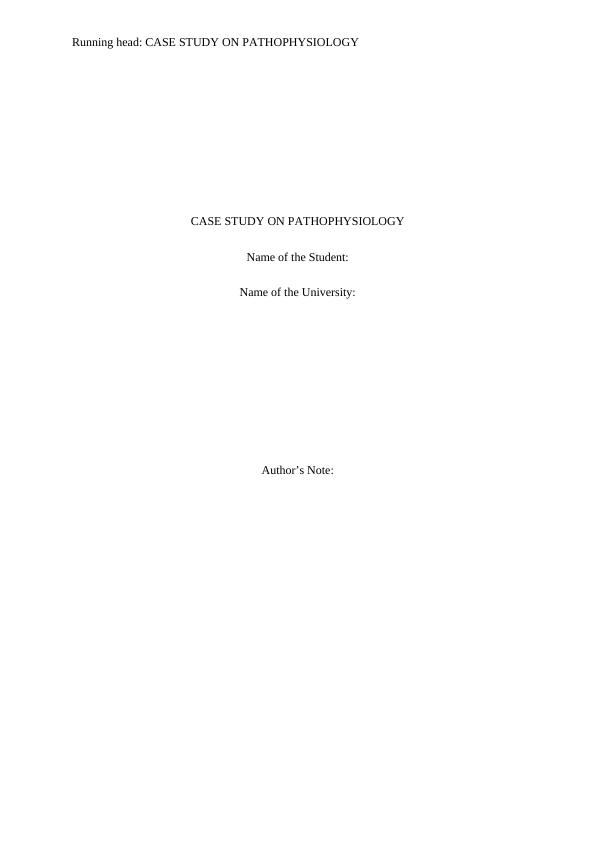Case Study on Pathophysiology
Review a case study and answer questions in a narrative format, including an introduction and conclusion. Use APA format, well-written sentences, and detailed explanations. Include at least 3 sources in the bibliography, with at least one non-Internet source. Do not use the textbook as a source.
9 Pages2704 Words393 Views
Added on 2023-04-21
About This Document
This paper deals with the case study of a client with chronic bronchitis, hypertension, and diabetes mellitus type II. It discusses the pathophysiology of the client's medical condition and suggests treatment goals and interventions.
Case Study on Pathophysiology
Review a case study and answer questions in a narrative format, including an introduction and conclusion. Use APA format, well-written sentences, and detailed explanations. Include at least 3 sources in the bibliography, with at least one non-Internet source. Do not use the textbook as a source.
Added on 2023-04-21
ShareRelated Documents
End of preview
Want to access all the pages? Upload your documents or become a member.
Prioritization of Health Issues Case Study
|11
|2516
|25
A case study of Hannah Sparkes
|8
|1909
|431
A Case Study on Chronic Kidney Failure
|17
|3624
|280
Integrated Health Care Assignment
|12
|4018
|84
Sepsis Infection in Minors: Case Study and Nursing Interventions
|11
|3188
|28
Nursing Essay 2022
|8
|3129
|10



